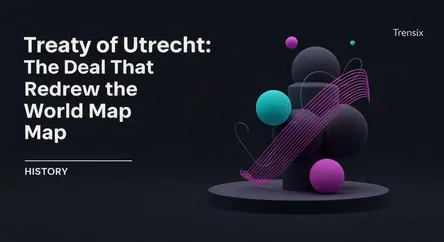History
Treaty of Utrecht: The Deal That Redrew the World Map

Explore the Treaty of Utrecht, the 1713 peace accord that ended a major European war and marked the rise of Great Britain as a global power.
What is it?
The Treaty of Utrecht refers to a series of peace treaties signed in 1713 that brought the War of the Spanish Succession (1701-1714) to an end. The primary cause of the war was the fear of France and Spain uniting under a single monarch. The treaties resolved this by allowing Philip V, a Bourbon, to remain King of Spain on the condition that he and his descendants renounce any claim to the French throne. This key provision was designed to maintain a balance of power in Europe, preventing any single nation from becoming too dominant.
Why is it trending?
Historically, the treaty is a watershed moment that reshaped European geopolitics. It marked the decline of French hegemony and confirmed the ascent of Great Britain as a premier maritime, commercial, and financial power in the world. As part of the settlement, France ceded significant North American territories to Britain, including Newfoundland, Nova Scotia, and the Hudson Bay region. Spain also ceded the strategic Mediterranean ports of Gibraltar and Minorca to Britain. The treaty is significant for being one of the first to formally mention the concept of a "balance of power."
How does it affect people?
The treaty's impact was global. For people in North America, it shifted the colonial balance of power, affecting French settlers and Indigenous nations as British influence expanded. A major consequence was Spain granting Britain the Asiento, the exclusive right to supply enslaved Africans to the Spanish American colonies for 30 years, dramatically escalating the transatlantic slave trade. This economic advantage, combined with new territorial gains, helped secure Britain's path to becoming the dominant global empire for the next century, fundamentally shaping international trade and politics.